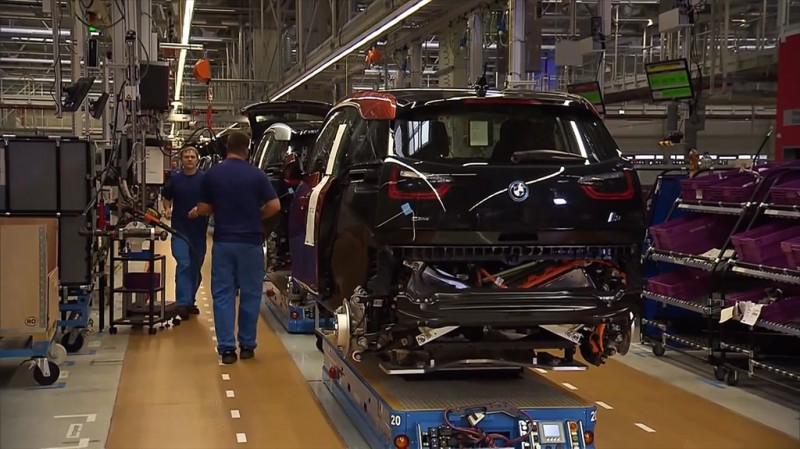Since the middle of September 2013, BMW has been rolling off their new electric baby, the i3 at their production facility in Leipzig, Germany.
This new BMW i3 video shows the manufacturing processes that go into producing the car.
Harald Kruger, Member of the Board of Management of BMW AG, says,
“The processes, the manufacturing facility and the manufacturing processes are completely different. It only takes 50 percent manufacturing time than a standard BMW product.”
Several pre-formed carbon fibre fabric elements are combined to create a carbon fibre blank which then has resin injected into it under high pressure. Water jets are then used to cut the final shape.
Creating the ‘life module’, BMW uses 150 CFRP (Carbon Fibre Reinforced Plastic) components meaning less than a third in number are required when compared to conventional steel bodied cars. The CFRP components are then bonded (glued) giving a very rigid structure.
Onto the ‘life module’ are the plastic doors which weigh half as much as their sheet metal equivalents and are, of course, anti-corrosion.
Meanwhile, the drive system, chassis and battery pack are separately put together since the i3 employs the idea that the drivetrain should be separate from the passenger compartment.
When the two parts, the ‘life module’ and chassis, are put together in the final stages, extraneous body work which is also mostly made from plastic is put in place.
Using 70% less water and half the usual amount of energy used in conventional vehicle manufacturing, BMW are aiming to set a high standard for sustainability in manufacturing with their production facility at Leipzig. In addition, the Leipzig site harnesses wind power by utilising four enormous high power wind turbines located on-site.
Source; BMW

